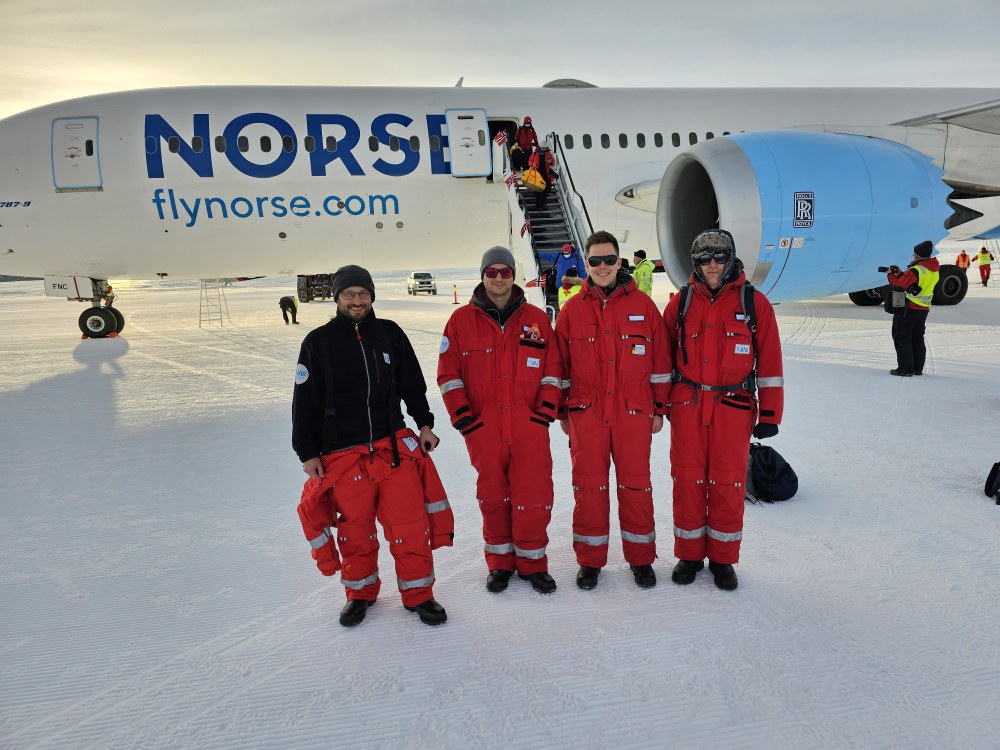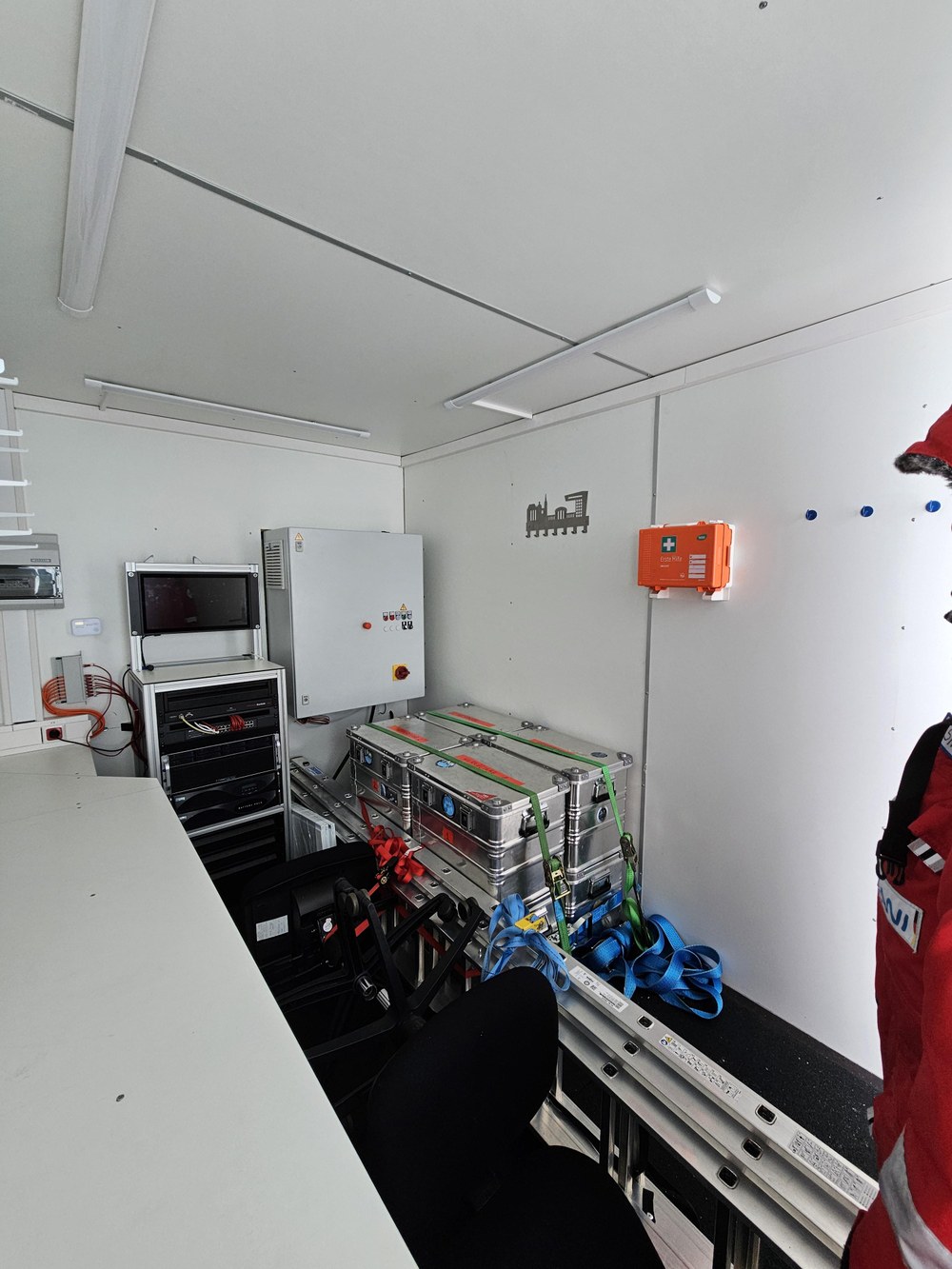Second TRIPLE-IceCraft expedition to Antarctica: Return to the eternal ice – Part 1

DLR/RWTH Aachen/Dirk Heinen
It's Sunday morning, 12 November 2023: The bags are packed, a quick covid test is done and the 2023-24 expedition to the 'eternal ice' is ready to begin. Our team had already travelled to Antarctica in the spring to test the TRIPLE-IceCraft meltdown probe near the Alfred Wegener Institute's (AWI) research station (AWI) Neumayer Station III. It is part of the TRIPLE project (Technologies for Rapid Ice Penetration and subglacial Lake Exploration) launched by the German Space Agency at DLR to develop an autonomous, robotic system for the contamination-free exploration of subglacial lakes and ultimately for the exploration of the oceans beneath the ice crust of Jupiter's moons Europa and Enceladus. The main goal of this new expedition is to further test the probe and melt even deeper, even reaching the ocean beneath the ice shelves.
Once again, we are travelling to Antarctica together with teams from the AWI and the Norwegian Polar Institute (NPI). Our first flight takes us to Oslo, Norway. There we will meet our colleagues who will also be travelling to Troll station or to Neumayer Station III. We spend one night at the airport hotel, and the next afternoon we will fly on to Cape Town on a Boeing 787 Dreamliner. With this direct flight, we avoid the several stopovers taken during our expedition in the spring. We arrive in Cape Town at sunrise. We grab our hand luggage and head off to the hotel. The onward flight is scheduled for tomorrow, Wednesday, early in the morning.
In the evening we get an update: the weather at the Troll station prevents us from landing at the planned time. Landing the aircraft requires good visibility, and with the forecasted cloud cover, the contrast is just too poor. We won't be leaving early in the morning but have to wait until midday to reassess the situation.

DLR/RWTH Aachen/Dirk Heinen

Confirmation comes late in the afternoon: We will continue this evening! We are picked up at the hotel and just an hour later we are sitting in the same aircraft as the previous leg of our trip. Finally, we're off to the sixth continent, Antarctica! The flight takes around five hours, and an hour before arrival, just as the Sun rises, we can already see the eternal ice below us. We quickly put on our polar clothing and begin the descent. We land at the airfield in Troll. We are back in Antarctica!


The ice-cold, dry air wakes us up straight away. It's Thursday, a few hours after midnight. Today is the beginning of the polar day, and the Sun will not set until we return in January 2024. The weather at Neumayer Station III is currently not good enough for us to fly any further. We continue to wait at the airfield, hour after hour.
Around midday, we finally receive the news that the weather is supposed to improve and that there should be a sufficient weather window to land in the evening. We wait, and in the late afternoon, the aircraft that will fly us onward has landed. It's a Basler BT-67, just like the one we took in January during the last expedition. First, we help to load the luggage and freight, and then we board the aircraft. After a good hour's flight, we touch down on the runway at Neumayer Station III. We get everything out of the plane and walk through the snow and ice towards the station. Here at last!



DLR/RWTH Aachen/Dirk Heinen

DLR/RWTH Aachen/Dirk Heinen

DLR/RWTH Aachen/Dirk Heinen


More than 106 hours have passed since we left Aachen, and we are overjoyed to have arrived. A quick dinner and then the coordination begins: what will we need and when?
Waking the TRIPLE-IceCraft probe from hibernation
The next day starts with breakfast at 7 am. Half an hour later, it's the daily meeting with the technical team. This is followed by a station briefing for all new arrivals, while a snow crawler drives off to the winter storage area, where our container with the TRIPLE-IceCraft probe is still in hibernation. All large objects are taken to this storage facility before winter, as huge snow deposits build up in their wake, which would be a problem closer to the station.
Our container with the sledge is heavily snowed in, rising only about one metre out of the snow. After a laborious push to free the container, it is attached, and the snow crawler pulls it to Neumayer Station III. We use the time to organise our air freight and prepare the spot where the container will later be placed. The container transport is very arduous because of all the snow. It takes longer than planned and then the sledge's towing chain breaks. Our container remains halfway to the station for the night.

DLR/RWTH Aachen/Dirk Heinen
The next day starts again with breakfast and a technical meeting. Our container is then towed to the 'radome', an antenna dome about 220 metres away from the station and parked with a new towing chain. We have chosen this location as it means we won't disrupt the station's logistics; it is within easy walking distance, and we can connect to the station's power grid. We start by opening both sides of the container and clearing out our boxes and the rest of the stowed material. We start testing the container's infrastructure: all the batteries are still alive, and our server system and generator power-up without any problems. We find no damage. All systems have survived hibernation very well! The next step is to transport the probe to the station so that we can work there regardless of the weather.

DLR/RWTH Aachen/Dirk Heinen
Tags:
